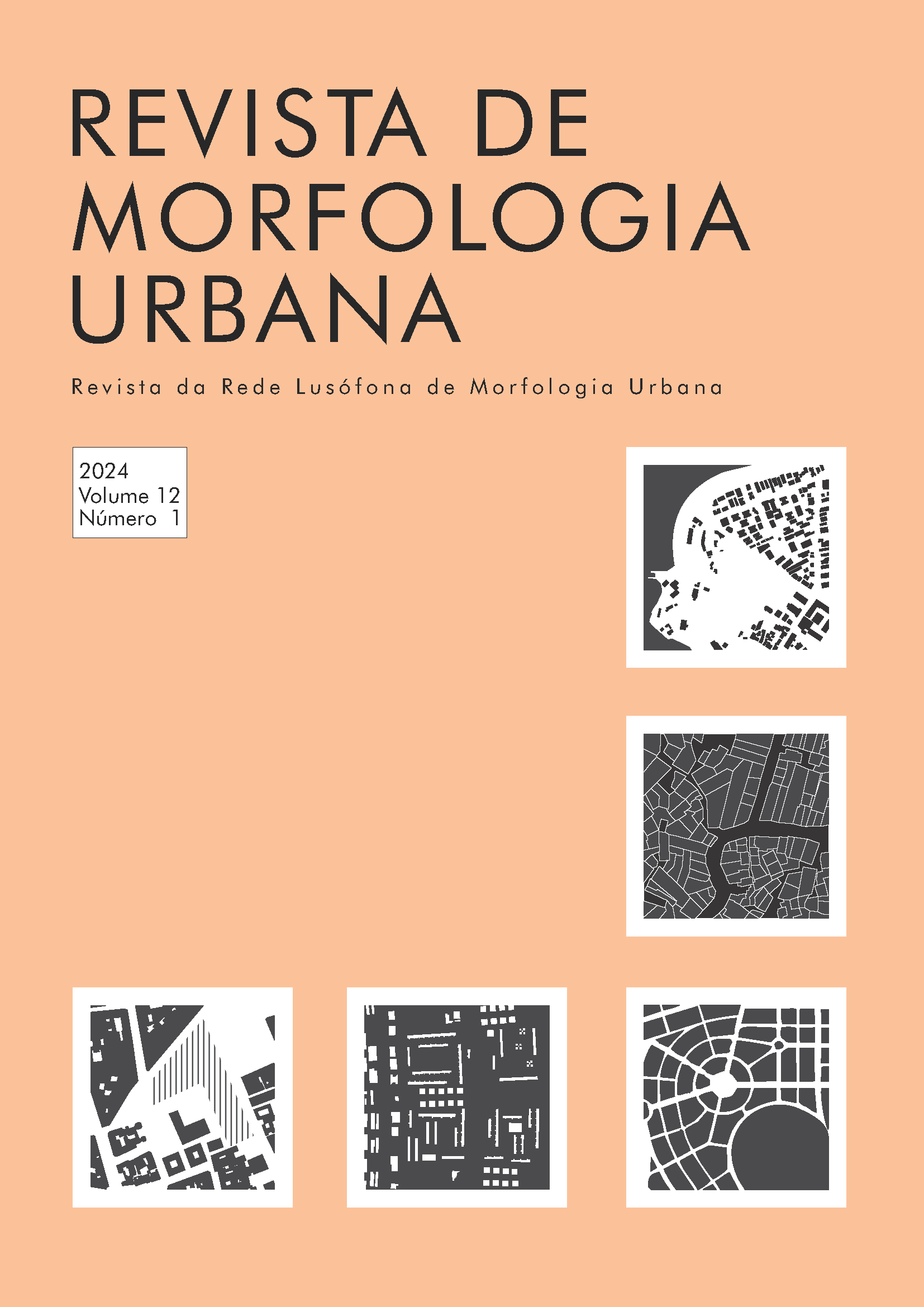Abstract
This paper identifies urban transformations and relations between forms, land use and movement in the Miramar neighborhood in João Pessoa – PB, over the last three decades. Located on one of the city's structural avenues with sea views, the Miramar neighborhood has undergone many recent transformations, attracting the real estate market to the area. This study is based on the theory of Space Syntax, aligned with the theory of natural movement. The study was carried out through comparative mapping between 1990 and 2020, relating building groups (type, interface, template) and land uses, with centralities in the urban network, using axial and segment maps and correlation graphs. In a more specific analysis, five different streets with similar centralities were selected, observing the real movement of pedestrians and cars. Results identified an increase in multi-family buildings, a trend towards building renovation on more central streets, an increase in the number of shops and services on more integrated streets, corroborating the theory of natural movement. When analyzing the real movement of passers-by, it was found that streets with more diversity of use showed more movement, as opposed to monofunctional streets with vertical buildings of the “isolated type”, pointing to signs of negative effects of recent buildings on urban vitality.
References
Castro, A., Donegan, L. (2020) Mapa Axial de João Pessoa - versão 2017 e 2020. http://urbanidades.arq.br/mapasconfiguracionais/category/brasil/paraiba/
Figueiredo, L. (2012) “Desurbanismo: um manual de destruição das cidades”, em Aguiar, D.; Netto, V. (org). Urbanidades. (Letra e Imagem, Rio de Janeiro) 209-234.
Gehl, J. (2013) Cidade para pessoas (Perspectiva , São Paulo).
Hillier, B. (2008) Space is the machine (Space Syntax, Londres) Disponível em: http://spaceisthemachine.com
Hillier, B.; Hanson, J. (1984) The social logic of space. (Cambridge University Press, Cambridge)
Hillier, B; Penn, A; Hanson, J; Grajewski, T.; Xu, J. (1993) “Natural movement: or, configuration and attraction in urban pedestrian movement.” , Environment and Planning B: Planning and Design 1, 29-66.
Jacobs, J. (1961) The Death and Life of Great American Cities. (Pimlico, London, UK).
Kronenberger, B. e Saboya, R. (2019) “Entre a servidão e a beira-mar: um estudo configuracional da segregação socioespacial na Área Conurbada de Florianópolis (ACF), Brasil”. Revista Brasileira de Gestão Urbana - Urbe, 11. https://doi.org/10.1590/2175-3369.011.e20170227
Martins, P. D. (2014) “Paisagem em movimento: as transformações na Avenida Epitácio Pessoa de 1980 a 2001” Dissertação de Mestrado publicada, Universidade Federal da Paraíba, João Pessoa, PB.
Medeiros, M. D. L. (2021) “ Em direção ao mar: Transformações no Bairro Miramar (1990-2020) e relações entre formas, usos e vida urbana ” Dissertação de Mestrado publicada, Universidade Federal da Paraíba, 2021.
Medeiros, M. D. L., Donegan, L. (2023) “Miramar, transformações recentes em direção ao mar”, Ocullum Ensaios, 20, https://doi.org/10.24220/2318-0919v20e2023a5251
Medeiros, V. A. S. de. (2006) “Urbis Brasilae, ou sobre Cidades do Brasil : Inserindo assentamentos urbanos do país em investigações configuracionais comparativas” Tese de Doutoramento publicada. Universidade de Brasília. Brasília.
Medeiros, V. A. S. de. e Trigueiro, E. (2012) “Fluvius Grandis Urbis Cartographica: buscando preencher ausências” Arquivos do Museu de História Natural, 20, 101-124.
Mello, S. de. (2008) “Na beira do rio tem uma cidade: urbanidade e valorização dos corpos d´água”. Tese de Doutoramento publicada. Universidade de Brasília, Brasília.
Netto, V., Vargas, J. C., Saboya, R. (2012) “(Buscando) os efeitos sociais da morfologia arquitetônica”, Revista Brasileira de Gestão Urbana - Urbe, 4, 2, 261-281. https://doi.org/10.7213/urbe.7400
Oliveira, J. L. A. de (2006) “Uma Contribuição aos Estudos Sobre a Relação Transportes e Crescimento Urbano: O Caso de João Pessoa – PB”. Dissertação de Mestrado. UFPB, João Pessoa, PB.
Palmeira, B. e Dias, M. (1997) Bairro do Miramar: sua história, seus moradores (Grafisi, João Pessoa).
Pereira, F. (2009) “Do incentivo ao controle: O debate sobre verticalização na cidade de João Pessoa (1956 – 1974)”. Revista de Pesquisa em Arquitetura e Urbanismo, 9, 3 – 21.
Prefeitura Municipal de João Pessoa. (2008) Plano Diretor da cidade de João Pessoa. PMJP, João Pessoa.
Silva,G., Silva, S. E, Nome, C. (2016) “Densidade, dispersão e forma urbana”. Vitruvius, 189.07.
Silva, E. R. (2016) “Centro Antigo de João Pessoa: Forma, uso e patrimônio edificado”. Dissertação de Mestrado. Universidade Federal do Rio Grande do Norte. Natal.
Van Den Hoek, J. (2008) “The MXI (Mixed-use Index) as tool for urban planning and analysis”, em Corporations and cities: envisioning corporate real estate in the urban future. Proceedings Phd. Delft, 65-85.
Vaughan, L. (2001) Space Syntax observation manual (Space Syntax, Londres).

This work is licensed under a Creative Commons Attribution 4.0 International License.
Copyright (c) 2024 Mariana Daltro Leite Medeiros


